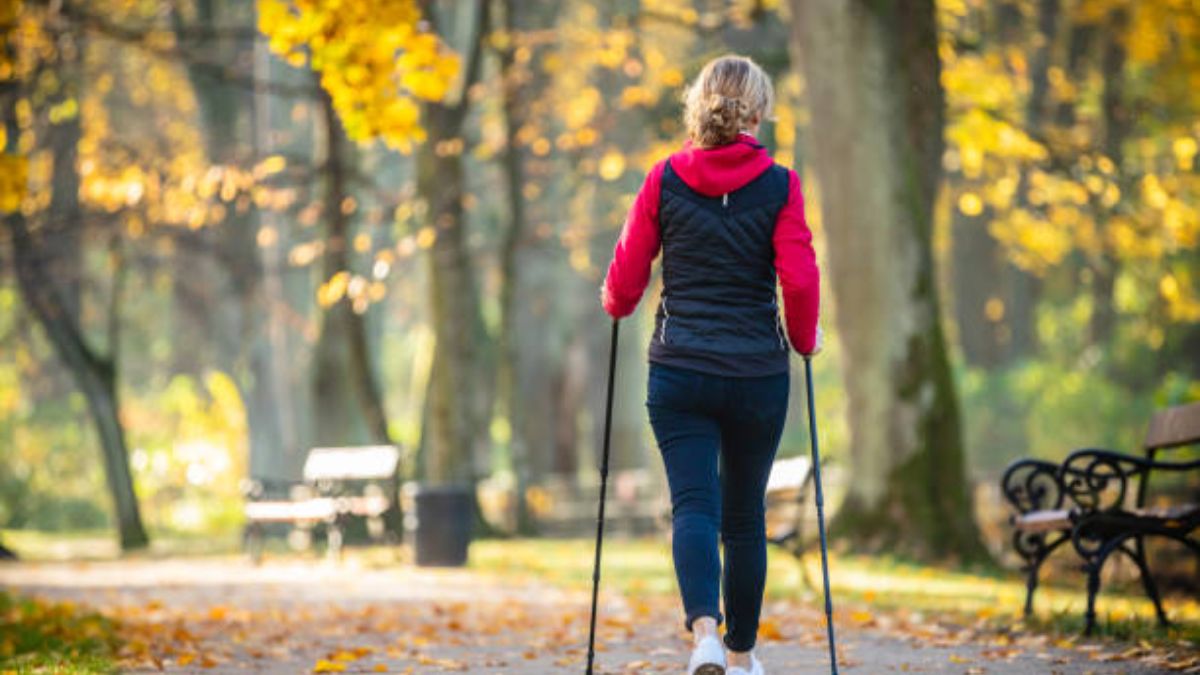What is Nordic Walking?
Nordic Walking is a fitness activity that involves walking with specially designed poles, similar to those used in cross-country skiing. Unlike regular walking, it engages both the upper and lower body by incorporating a pushing motion with the poles, turning a simple walk into a full-body workout. Originating in Finland in the 1930s as off-season training for skiers, it has evolved into a low-impact, high-reward exercise suitable for all fitness levels.
Why Is It Different From Regular Walking?
- Uses lightweight, ergonomic poles to engage arms, shoulders, and core
- Burns 20-40% more calories than standard walking
- Reduces joint strain by distributing body weight
- Activates 90% of major muscle groups
The Science-Backed Benefits of Nordic Walking
1. Shrinks Waistline & Burns Fat
A University of Verona study found that participants who practiced Nordic Walking for six months saw significant reductions in body fat and waist circumference. Because it engages more muscles, it torches calories faster than regular walking.
2. Strengthens Muscles & Improves Posture
Unlike normal walking (which mostly works the legs), Nordic Walking activates:
✔ Arms & shoulders (from pole movement)
✔ Core & back (for stability)
✔ Glutes & legs (with longer strides)
This makes it an effective strength-building exercise without heavy weights.
3. Supports Joint Health & Rehabilitation
- Recommended for arthritis, knee pain, and back issues
- Helps post-surgery recovery (e.g., knee/hip replacements)
- Beneficial for Parkinson’s & stroke patients (improves balance & coordination)
4. Boosts Heart Health & Endurance
Harvard Medical School highlights Nordic Walking as superior to traditional walking for:
✅ Cardiovascular fitness
✅ Lowering blood pressure
✅ Improving aerobic capacity
How to Do Nordic Walking Correctly
To maximize benefits, follow these key techniques:
- Grip & Pole Movement – Hold poles at a 45° angle, push back with each step.
- Stride Length – Take natural, elongated steps.
- Posture – Lean slightly forward from ankles, not waist.
- Rhythm – Alternate arm & leg movements (left pole with right foot).
Pro Tip: Beginners should take a short training session to avoid improper form.
Who Should Try Nordic Walking?
✔ Fitness newbies – Low-impact, easy to start
✔ Weight loss seekers – Burns more calories than jogging
✔ Seniors – Improves mobility without joint stress
✔ Office workers – Counters sedentary lifestyle effects
Final Verdict: A Workout Worth Trying
Backed by Harvard research and praised by physiotherapists, Nordic Walking is more than just walking with poles—it’s a science-approved way to lose weight, build strength, and enhance longevity. Whether you’re recovering from an injury or seeking a fun outdoor workout, this trend delivers real results.
Ready to try? Grab a pair of poles and step into a fitter, healthier you!
Disclaimer: The content provided is for informational purposes only and does not constitute medical advice. Before beginning Nordic Walking or any new fitness regimen, consult with your physician or qualified healthcare professional, particularly if you have pre-existing health conditions. Proper instruction and technique are crucial to maximize benefits and minimize injury risk. Individual results may vary based on factors including but not limited to age, fitness level, and health status. Neither the publisher nor authors assume liability for any injuries or health consequences resulting from the use of this information.




